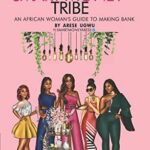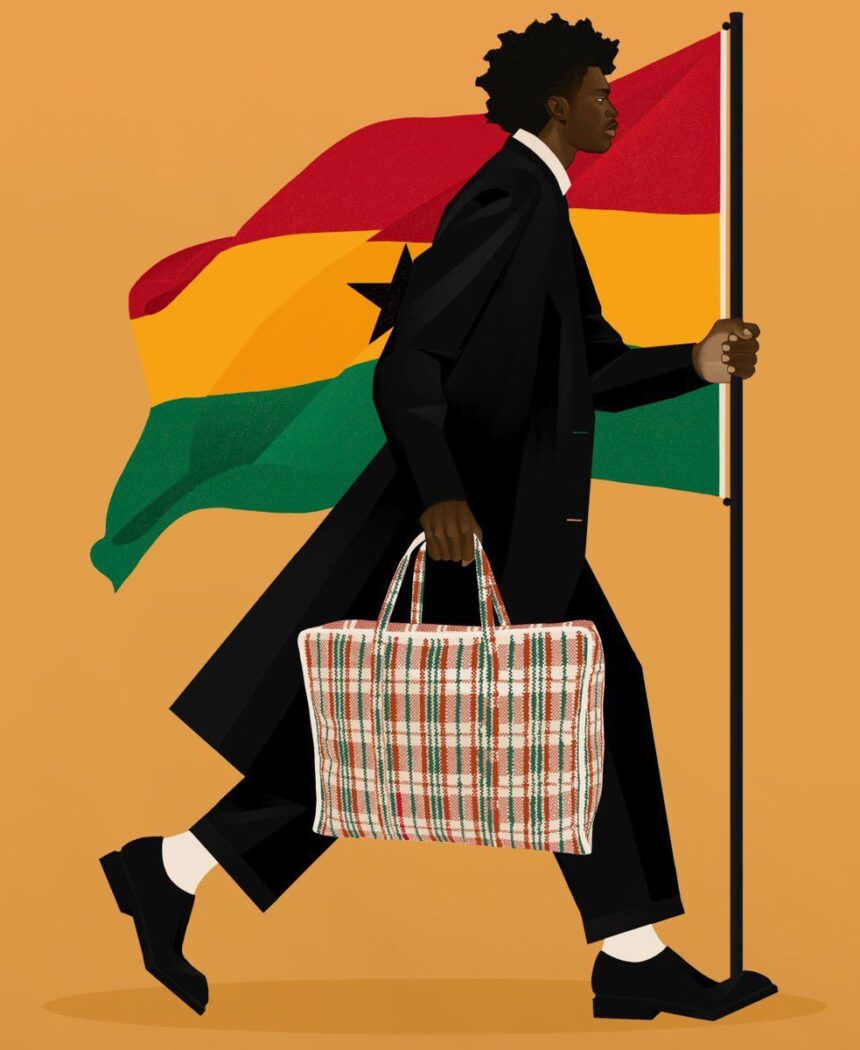To kickoff the African Fabric Series, I initially wanted to write about the Maasai cloth or the Ankara Wax print. Very on the nose. However, as I got to doing some research, the Ghana must go bag was trending and my attention got distracted to this bag that almost every sub-Saharan household has or has had at one time in their life.
This past month, a luxury French brand released a collection that incensed a lot of people across the globe. This particular fashion house released the commonly known ‘Ghana Must Go bag‘ as their own. To be celebrated and written in history as one of their iconic collections. Africa can reclaim that narrative. It can rewrite the story. Piggyback on the wave and use this opportunity to amplify its voice.

The Ghana Must Go bag was born out of displacement, exile, and survival — a vessel of African migration history. Yet somehow, global fashion houses have attempted to strip it of context, parading the same checkered pattern on runways for profit. This is not just cultural borrowing; it’s cultural erasure. Africa does not need to validate its symbols. It is time we reclaim the Ghana Must Go bag for what it truly is: a testament to African resilience, not a designer accessory with a four-figure price tag. (Seriously, the amount it was sold for was shocking to say the least)
But beyond the headlines and the runways lies a deeper story — one of practicality, endurance, and reinvention. For decades, the Ghana Must Go bag has carried more than belongings; it has carried memory, mobility, and the African spirit of survival. To understand this bag is to understand the resilience of African life itself.
What is the Ghana Must Go Bag?
The Ghana Must Go bag is a large, woven, checkered plastic bag with a zipper, instantly recognizable across Sub Saharan Africa. Though not a “fabric” in the traditional sense, it has become woven into the fabric of African living.
Durable, inexpensive, and everywhere, it’s the bag that has helped people move house, travel, or pack for entire new chapters of life. But its name carries a powerful reminder of migration and displacement.
The History Behind the Name
In the early 1980s, amid political and economic tensions, Nigeria ordered hundreds of thousands of Ghanaians living in Ghana to leave. Families had little time to pack. The affordable, strong plastic woven bags became the container of choice; big enough for hurried bundles, strong enough for long journeys.
From then on, they were called “Ghana Must Go.”
For many, the name was painful — a reminder of forced departure and rejection. Yet over time, as Africans always do, communities reclaimed it, reshaping the bag’s meaning into one of resilience and practicality.

Durability Meets Every day African Life
Why did this bag endure while others faded away?
-
Durability: Woven polypropylene makes it water-resistant and almost indestructible.
-
Affordability: Cheap enough for everyone, from students to market women.
-
Functionality: The ultimate carry-all for moving house, sending provisions, or traveling.
In African households, you’ll find Ghana Must Go bags tucked under beds, stacked in corners, or tied to car roofs. They’re the silent but faithful companions of transition.
From African Streets to Global Runways
By the early 2000s, global designers began reimagining the Ghana Must Go aesthetic. Louis Vuitton, Celine, and Balenciaga turned its checkered weave into “high fashion,” selling versions of the bag at premium prices.
The irony? The very bag once associated with hurried migration was suddenly celebrated on glossy catwalks. Critics saw appropriation. Supporters saw recognition. But for Africans, it raised a question: why should our stories only be celebrated when filtered through Paris or Milan?
Symbolism in Modern Africa
Today, the Ghana Must Go bag continues to hold cultural weight:
-
At weddings, it carries supplies and gifts from aunties.
-
In student hostels, it marks the start and end of semesters.
-
At bus parks and airports, it signals mobility and hustle.
-
In art galleries, it is reimagined as a symbol of migration and resilience.
No longer just a “cheap bag,” it has become shorthand for transition, endurance, and abundance.

Lessons From the Ghana Must Go Bag
The Ghana Must Go may not be cotton, silk, or kente, but it is still woven not just of polypropylene, but of history, identity, and survival. It challenges us to expand our definition of African fashion and fabrics.
Sometimes, the most iconic “textiles” are not those worn for show but those that carry the weight of real life. That too is heritage.
Final Takeaway
The Ghana Must Go bag is more than plastic and zippers. It is history. It is transition. It is Iconic While the West may parade it on runways, only Africa can tell it’s true story.
And in reclaiming that story, we remind the world: African fabrics are not just fashion. They are identity. They are resilience. They are us.












